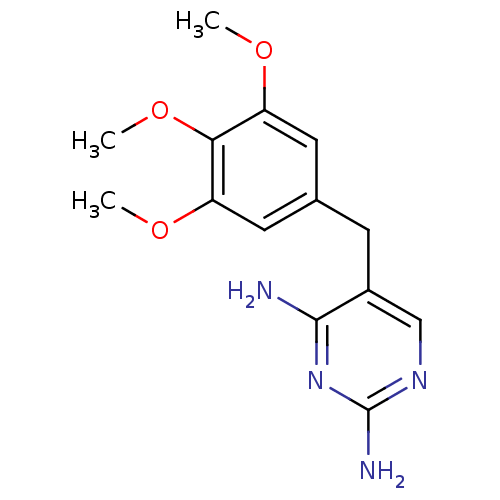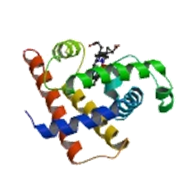BDBM18069 5-[(3,4,5-trimethoxyphenyl)methyl]pyrimidine-2,4-diamine::CHEMBL22::TMP::Trimethoprim::Trimethoprim (TMP)::US10870625, Compound TMP
SMILES COc1cc(Cc2cnc(N)nc2N)cc(OC)c1OC
InChI Key InChIKey=IEDVJHCEMCRBQM-UHFFFAOYSA-N
Activity Spreadsheet -- Enzyme Inhibition Constant Data from BindingDB
 Found 4 hits for monomerid = 18069
Found 4 hits for monomerid = 18069
Affinity DataIC50: 23nMAssay Description:IC50 values were determined following a standard method that has been described previously (Reeve et al., 2014, 2016).More data for this Ligand-Target Pair
Affinity DataIC50: 3.80E+5nMAssay Description:IC50 values were determined following a standard method that has been described previously (Reeve et al., 2014, 2016).More data for this Ligand-Target Pair
Affinity DataIC50: 1.51E+4nMAssay Description:IC50 values were determined following a standard method that has been described previously (Reeve et al., 2014, 2016).More data for this Ligand-Target Pair
Affinity DataIC50: 4.30E+4nMAssay Description:IC50 values were determined following a standard method that has been described previously (Reeve et al., 2014, 2016).More data for this Ligand-Target Pair

 3D Structure (crystal)
3D Structure (crystal)